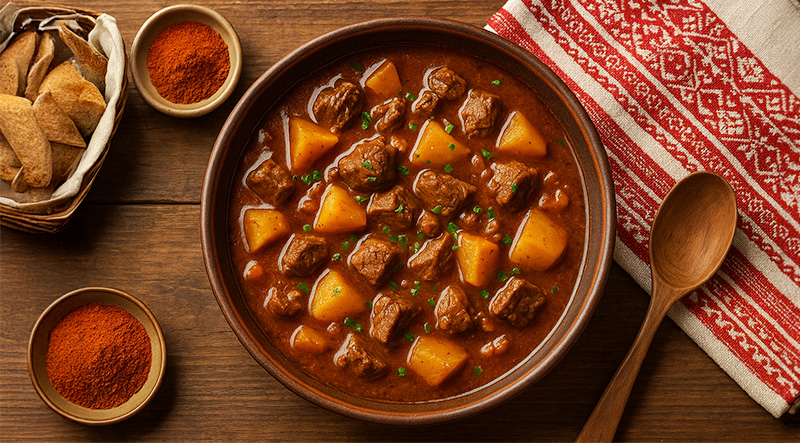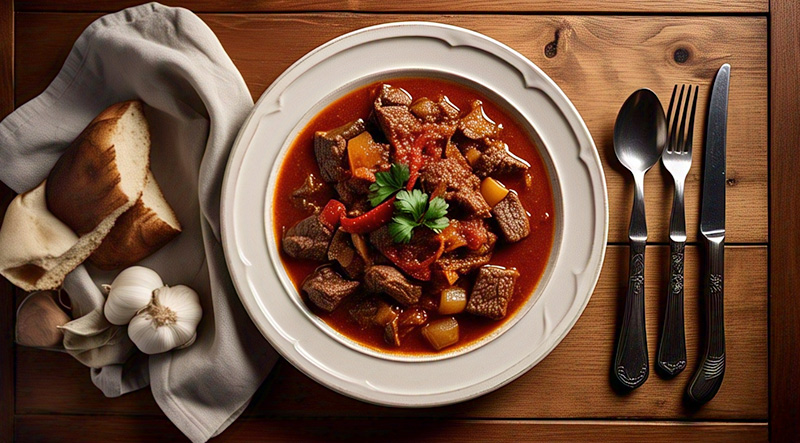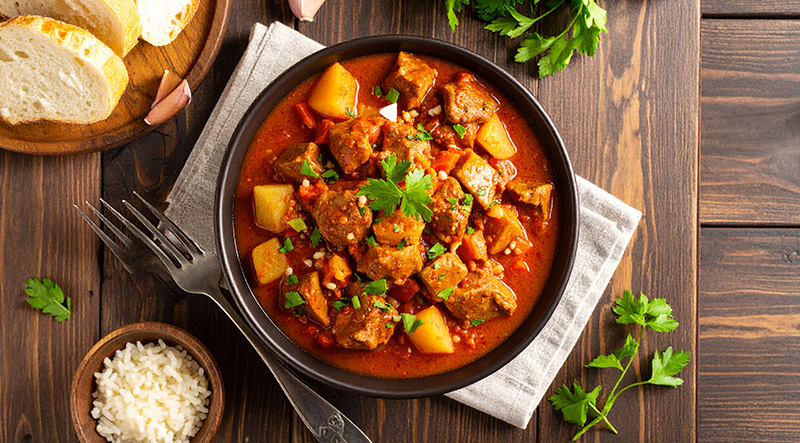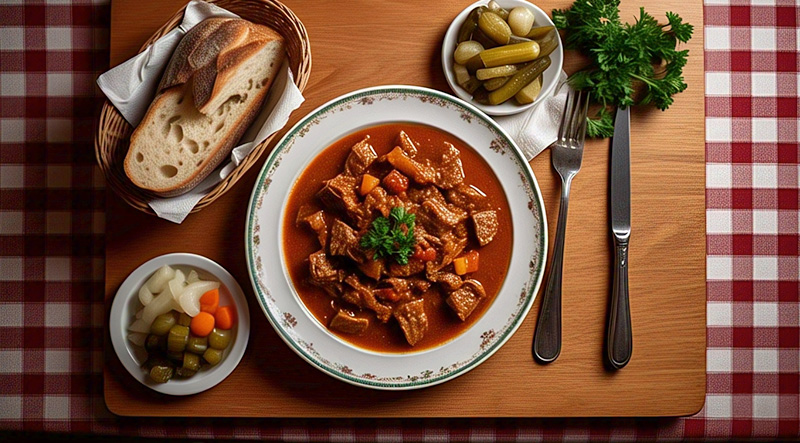The comforting national dish of Hungary, goulash (Gulyás), is hearty, rustic, and bursting with robust paprika flavor. With tender chunks of meat, hearty root vegetables, and a savory broth seasoned with sweet Hungarian paprika—the dish's star—this classic beef stew-soup hybrid is slow-cooked to perfection. Cattle herders on the Hungarian plains have long simmered goulash over open flames, and it is still a popular dish at both festive and family dinners. It's more than just a meal; it's a taste of Hungary's hospitality, heart, and history. Read More...
The History of Goulash (Gulyás), Hungary’s National Treasure:
Goulash—known as Gulyás in Hungarian—is far more than just a hearty stew. Its roots stretch back to the 9th century, when Hungarian herdsmen (gulyás) roamed the vast plains of the Puszta with their cattle. These cowherds would cook a simple meat dish in large cauldrons over open fires, using sun-dried beef, water, and onions. Once the meat and broth cooked down, it was left to dry in the sun and stored in bags made from sheep’s stomachs. When they traveled, the dried meat could be rehydrated to make a quick, nourishing meal—what we now recognize as the precursor to Goulash.
The Rise of Paprika:
Paprika—the essential spice that gives Goulash its vibrant red color and smoky-sweet depth—wasn’t part of the original recipe. It entered Hungarian kitchens only in the 18th century, after being introduced via trade routes from the Americas. Once paprika became widely grown in Hungary’s warm southern climates, it transformed the national cuisine and became synonymous with Goulash.
Goulash vs. Stew:
Contrary to popular belief, traditional Hungarian Gulyás is not a thick stew, but a soupier dish—flavored with paprika, onions, garlic, and sometimes caraway seeds. It typically includes beef or veal, potatoes, and carrots, and is often served with csipetke (small egg dumplings). The stew-like version of Goulash known in the West is more akin to pörkölt or paprikás, other traditional Hungarian meat dishes.
A Symbol of National Identity:
By the 19th century, Gulyás had evolved from a shepherd’s sustenance into a national symbol of Hungarian identity, particularly during the Austro-Hungarian Empire. As Hungarian nationalism grew, so did the pride in its native cuisine. Goulash began appearing in urban homes, restaurants, and even on international tables, adapting to local tastes but always maintaining its paprika-rich essence.
Global Fame and Regional Variations:
Today, Goulash is one of Hungary’s most recognized culinary exports. From Germany to Czechia, versions of Goulash have found their place in kitchens across Europe. Yet, the Hungarian original remains unmatched—still simmered with care, served piping hot, and shared with family and friends.
Conclusion:
Goulash is more than a dish; it’s a culinary time capsule that reflects Hungary’s pastoral past, spice-laden trade routes, and proud cultural identity. With every ladle of its paprika-laced broth, Gulyás continues to tell the story of a nation that turned humble ingredients into an unforgettable national treasure.
Render fat & sweat onions:

Paprika bloom:

Brown the beef:
Add tomatoes & pepper:

Liquid & slow simmer:
Vegetables & finish:

Adjust & serve:
Enjoy a warming bowl of Hungary’s most iconic dish—fragrant with paprika, hearty with beef and vegetables, and perfect for sharing.
The total preparation and cooking time for Hungarian Goulash (Gulyás) is approximately 2 hours. This includes around 20–30 minutes of preparation—chopping onions, cubing beef, and prepping vegetables—followed by 90 minutes of cooking time. The goulash simmers slowly to allow the flavors to develop and the beef to become tender, with the final 30 minutes used to cook the vegetables and any optional additions like dumplings.
A single serving of traditional Hungarian Goulash (Gulyás), based on the recipe provided, contains approximately 350 to 450 calories. This estimate includes a hearty portion of beef, vegetables (potatoes, carrots, onions), and a small amount of fat used for sautéing. The majority of the calories come from the beef and potatoes, with modest contributions from the oil and optional additions like csipetke noodles or bread on the side. Using leaner cuts of beef or reducing oil can slightly lower the calorie count, while adding dumplings or serving with bread will increase it.







